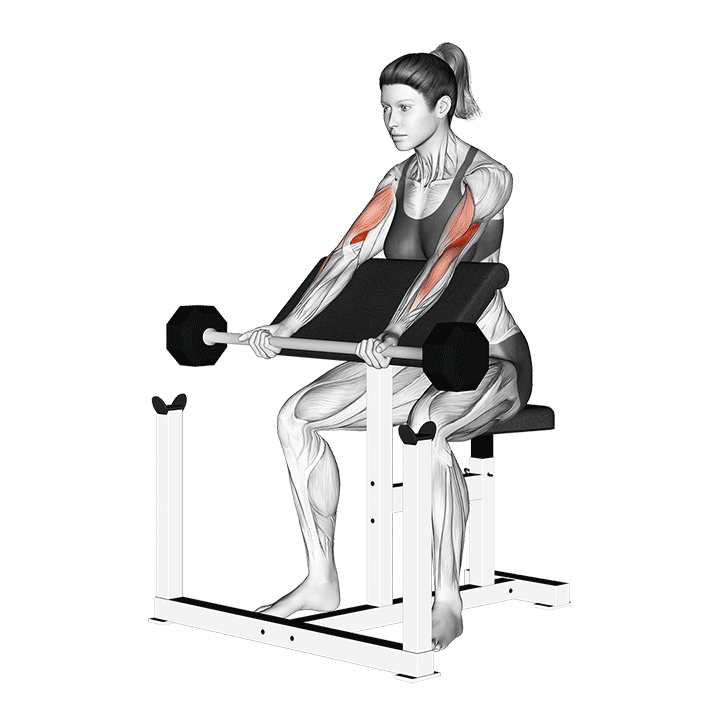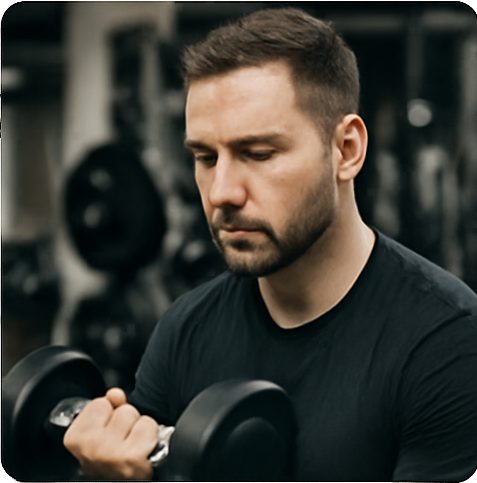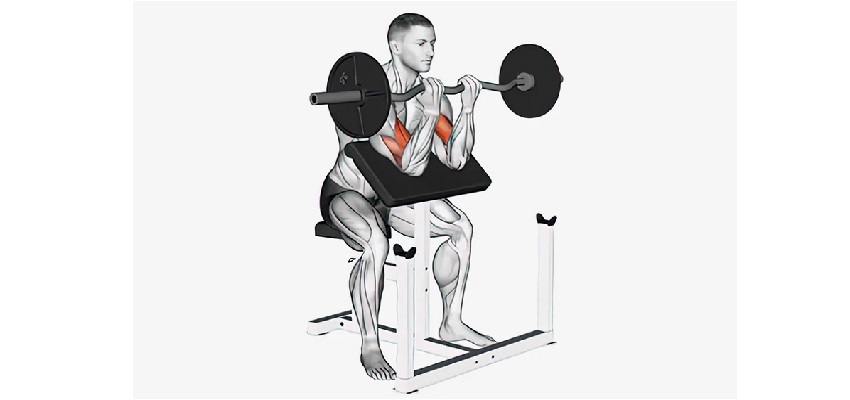The first time I tried a barbell preacher curl, I was like… wait, why does this feel so different from a regular curl?
I always figured curls were curls. You grab a bar, you lift it, your biceps burn — that’s it, right?
But the more I trained, the more I noticed guys with seriously dialed-in arms doing preacher curls. I’d scroll Reddit or hit the gym, and there it was again. People saying preacher curls gave them better biceps peaks or helped them isolate more.
At first, I kind of brushed it off. I thought it was just hype. But eventually, curiosity won. I decided to try both back-to-back — regular barbell curls vs barbell preacher curls — and see what actually felt different.
Spoiler: there is a difference. A big one.
This post breaks down what I noticed, how I do preacher curls now, and why they’ve earned a permanent spot in my arm day.
Barbell Curls vs Preacher Curl: What’s the Real Difference?
After doing both, I can say this: barbell curls work the biceps, but barbell preacher curls lock them in. That’s the biggest difference.
Barbell curls give you more freedom — you can use a bit of momentum, shift your elbows, lean back a little when it gets heavy. It’s not necessarily bad, but you’re using other muscles to help finish the rep.
Now with barbell preacher curls? Nah, there’s no cheating here. Your upper arms are pinned to the pad. All the effort goes straight into the biceps. That’s why it feels way harder — and honestly, way more targeted.
Here’s how I’d break it down from what I felt:
| Category | Barbell Curl | Barbell Preacher Curl |
|---|---|---|
| Setup | Standing, free movement | Seated, arms locked into pad |
| Form Freedom | You can cheat a little (momentum, lean, elbow shift) | No cheating — strict form only |
| Range of Motion | Decent stretch, but tension drops at the top | Bigger stretch at bottom, stronger squeeze at the top |
| Tension Profile | Hardest at the bottom, easier at the top | Constant tension through the full range |
| Muscle Isolation | Good, but involves stabilizers and posture muscles | Pure biceps — super isolated burn |
| Fatigue/Feel | General arm burn, can go heavier | Deep bicep fatigue, intense pump |
| Best For | Strength, size, and volume training | Isolation, control, and perfect contraction |
| What I Do Now | Use for heavier curls and ego sets | Use when I want clean reps and that locked-in biceps feel |
So yeah, barbell curls are great for moving more weight and building general strength. But if we’re talking pure biceps isolation and control? Barbell preacher curl just hits different.
I didn’t expect it to feel that different — but now I use both, just for different goals.
How I Learned to Do Barbell Preacher Curls Properly
When I first tried barbell preacher curls, I thought I could just sit down and curl like normal. Yeah… no. I messed it up.
At first, I went too heavy — typical rookie mistake. My elbows kept drifting off the pad, and the whole thing felt awkward. I wasn’t getting that deep biceps burn everyone talks about.

Eventually, I slowed it down and focused on setup:
- I sit with my chest tight to the pad.
- I grip the barbell just outside shoulder-width — not too wide.
- I pin my upper arms to the bench and don’t let them move.
- I curl up smooth, squeeze at the top, then lower it slow.
Once I stopped ego lifting and started doing it right, it clicked. You seriously can’t cheat on this movement. That’s what makes it so good.
Barbell Preacher Curl Tips That Actually Helped
Here’s what made a big difference for me:
- Keep your upper arms glued to the pad. If they lift off, you’re basically just doing a weird barbell curl.
- Use moderate weight. Going too heavy ruins the form and kills the isolation.
- Control the negative. Lowering the bar slowly gives a better pump than rushing through it.
- Watch the bar path. Keep it straight — don’t swing or let your wrists roll.
These little tweaks changed everything. Now I actually feel the movement where I’m supposed to.
What Muscles Preacher Curls Really Target
➤ Primary Muscles
The main muscle that gets smoked is the biceps brachii — especially the long head. That’s the part that gives your arm that “peak” look.
Honestly, this is the first curl variation where I could actually feel the top of my biceps light up.
➤ Secondary Muscles
You’ll also get some activation in the brachialis and forearm flexors, but it’s minimal. Preacher curls are mostly about keeping that tension locked into your biceps.
The Benefits I Got From Barbell Preacher Curls
After a few weeks of doing them consistently, here’s what I noticed:
- My biceps peak looked more defined, even without flexing.
- I developed a stronger mind-muscle connection — I could actually feel the biceps working.
- Since I couldn’t cheat, I started seeing more real progress, not just swinging heavier weights around.
- It fit easily into my arm days or even at the end of push/pull sessions.
It’s one of those lifts that makes you slow down and do things right — and your biceps thank you for it.
How I Program Preacher Curls Now
I don’t overcomplicate it. Here’s how I fit preacher curls into my weekly training:
| When I Use Them | After barbell curls or as my main biceps isolation move |
|---|---|
| How Many Sets | 3–4 sets |
| How Many Reps | 10–12 reps |
| Rest Between Sets | 60–75 seconds |
Straight Bar or EZ-Bar? I use an EZ-bar — way easier on the wrists. EZ-bar has been a game changer for me. It still hits the biceps hard, but without that uncomfortable wrist angle the straight bar gives me.
Once I added them in, my biceps started to look fuller. Not just bigger, but sharper too. The isolation is no joke. You can’t cheat, and that’s exactly why they work.
I wouldn’t say they replace regular barbell curls, but they’re a perfect combo. One builds raw strength, the other locks in shape and control.
If you’re chasing that biceps peak or just want something that forces good form, give preacher curls a real shot.
Anyone else have gains blow up after adding these? Would love to hear your experience.

Hi, I’m the editor here at Leadman Fitness. We’re a manufacturer focused on producing top-quality barbells, plates, kettlebells, dumbbells, and strength training gear. I’ve been into sports and fitness for years, and I know my way around all kinds of gym equipment—both from using it and helping create it.
I spend a lot of time understanding the real problems people run into in the gym—whether it’s beginners trying to pick the right gear or experienced lifters looking for something more durable. I stay in close touch with our production team and talk directly with other equipment makers, so we’re always improving based on what real lifters and coaches are looking for.
What I share comes from hands-on experience—stuff that actually helps people train better, not just in theory, but in real gyms.
